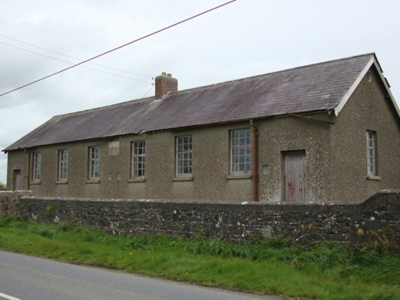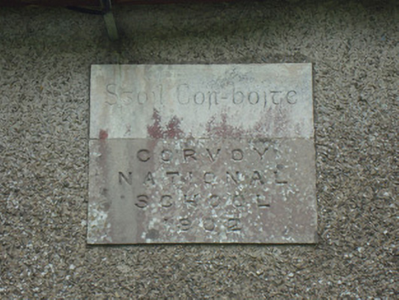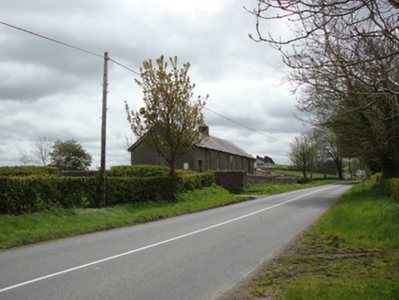Survey Data
Reg No
41401902
Rating
Regional
Categories of Special Interest
Architectural, Social
Original Use
School
Date
1900 - 1905
Coordinates
272335, 324722
Date Recorded
20/05/2012
Date Updated
--/--/--
Description
Detached eight-bay single-storey school, dated 1902. Now vacant. Pitched slate roof with single red brick chimneystack to mid-roof, and cast-iron rainwater goods. Harl-rendered walls, having carved stone date plaque to centre of west elevation. Square-headed window openings with timber casement windows having six-over-nine pane arrangement. Square-headed door openings to ends of west elevation, with timber battened doors, rendered reveals and stone platforms to front. Coursed rubble limestone boundary wall, central dividing wall to east elevation separating girls' and boys' yards, with divided lean-to single-bay single-storey outbuilding to either side of wall, having smooth rendered red brick walls. Rubble limestone wall to west of site, having central wrought-iron pedestrian gate flanked by square-plan masonry gate piers. Cast-iron postbox set into wall, having 'P & T' branding over aperture. Located to east of road east of Church of the Holy Rosary.
Appraisal
Opened in 1902, Corvoy National School replaced a mid-nineteenth-century school building to the west, located in close vicinity to the Church of the Holy Rosary. The form and layout of Corvoy National School is typical of an early-twentieth century rural Irish national school, many of which were built at this time to a standard design by the Office of Public Works. The plan accommodated two classrooms and cloakrooms, for boys and girls, within a symmetrical building. A dividing wall separated the sexes to the east, and a lean-to outbuilding acted as a lavatory. The original character of the school is intact, with original timber casement windows. The school is of architectural and social significance, its social function enhanced by the presence of a post-Independence post-box to the west wall to the school, a notable example of the high quality of mass-produced cast-ironwork produced in Ireland in the early twentieth century.





